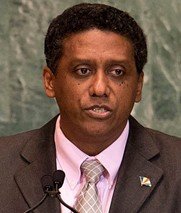
The Republic of Seychelles comprises 115 islands occupying a land area of 455 km² and an Exclusive Economic Zone of 1.4 km² in the western Indian Ocean. It represents an archipelago of legendary beauty that extends from between 4 and 10 degrees south of the equator and which lies between 480km and 1,600km from the east coast of Africa. Of these 115 islands, 41 constitute the oldest mid-oceanic granite islands on earth while a further 74 form the low-lying coral atolls and reef islands of the Outer Islands.
The granitic islands of the Seychelles archipelago cluster around the main island of Mahé, home to the international airport and the capital, Victoria, and its neighbouring islands of Praslin and La Digue. Together, these Inner Islands form the cultural and economic hub of the nation and contain the majority of Seychelles’’ tourism facilities as well as its most stunning beaches.
The Portuguese explorer Vasco da Gama discovered the Seychelles Islands (then uninhabited) in 1502. The Seychelles were uninhabited when the British East India Company arrived on the archipelago in 1609. Thereafter, they became a favorite pirate haven. The name Seychelles derives from Jean Moreau de Séchelles, Louis XV’s Minister of Finance. The French claimed the islands in 1756 and administered them as part of the colony of Mauritius. The British gained control of the islands through the Treaty of Paris (1814) and changed the islands’ name from the French Séchelles to the Anglicized Seychelles.
The islands became self-governing in 1975 and independent on June 29, 1976. They have remained a member of the Commonwealth of Nations. Their first president, James Mancham, was overthrown in 1977 by the Prime Minister, France-Albert René. At first René created a Socialist state with a one-party system, but later he reintroduced a multiparty system as well as various reforms.
 GOVERNMENT
GOVERNMENT
The Republic of Seychelles has a socialist multi-party political system with an executive President as head of state and government. The President heads a Cabinet of 13 ministers which includes the Vice-President. The current President of The Republic of Seychelles is President Danny Antoine Rollen Faure who was born on 8th May, 1962 to Seychellois parents in Kilembe, Uganda.
Selection of the President is by popular vote in an election held every five years. No opposition candidate ran for President until the elections of 1994. The government headed by the President wields executive power through an appointed cabinet. Legislative power is based in the National Assembly, twenty-five of whose members are elected to five-year terms by popular vote in specific constituencies, with the remaining nine out of the thirty-four seats appointed by the government based on a proportional formula allocating those seats to members of political parties by the percentage of votes in the election for that party. The membership of the President’s cabinet must be approved by the National Assembly.
There are twenty-five administrative regions that form the constituencies of the National Assembly. The collection of eight districts that comprise the capital city on the main island of Mahé is called Greater Victoria; the remainder of the rural areas on the island of Mahé comprise another fourteen districts. Two more districts are on the island of Praslin; the district based on the island of La Digue includes some other smaller nearby islands. All the other Outer Islands do not belong to any district and have no distinct representation in the National Assembly. The executive president is permitted to serve for a maximum of three five-year terms.
 ECONOMY
ECONOMY
Since independence in 1976, per capita output in this Indian Ocean archipelago has expanded to roughly seven times the pre-independence, near-subsistence level, moving the island into the upper-middle- income group of countries. Growth has been led by the tourist sector, which employs about 30% of the labor force and provides more than 70% of hard currency earnings, and by tuna fishing.
In recent years, the economy of the Seychelles has expanded to include a variety of industries. Also, the government has encouraged foreign investment to upgrade hotels and other services. At the same time, the government has moved to reduce the dependence on tourism by promoting the development of farming, fishing, and small- scale manufacturing. However, in the early days of its development, the collection of islands known as the Seychelles thrived on exports. Most of the money in the islands came from selling the goods that were harvested on plantations. These included copra, vanilla and cinnamon. While these still bring in some money for the Seychelles, they are no longer the driving force in the economy.
In 2008, having depleted its foreign exchange reserves, Seychelles defaulted on interest payments due on a $230 million Eurobond, requested assistance from the IMF, and immediately enacted a number of significant structural reforms, including liberalization of the exchange rate, reform of the public sector to include layoffs, and the sale of some state assets. In December 2013, the IMF declared that Seychelles had successfully transitioned to a market- based economy with full employment and a fiscal surplus. Seychelles grew at 4.3% in 2015 because of a strong tourist sector and expanding private sector credits; its fiscal surplus reached 4% of GDP.
In 2012, the gross national income (GNI) per capita of Seychelles was calculated by the World Bank at $12,180 per year, which was already extremely close to the $12,736 upper limit of the ‘upper middle income’ classification, and Seychelles’ GNI per capita has increased to $13,990 for 2014. With its recent accession to the World Trade Organisation, an upswing in tourism and steady progress towards ocean-floor oil and gas exploration, the Seychelles could soon be on the verge of even more when it comes to its domestic earnings. (Seychelles News Agency).
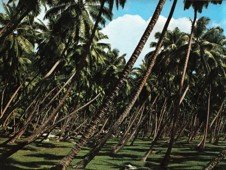
AGRICULTURE
Agriculture, along with forestry and fisheries, only account for 3% of the GDP of Seychelles (2010); 6.5% of land is dedicated to agricultural use and less than 1% of the population is employed by the sector (2010). Agriculture in Seychelles is limited by a lack of arable land and extreme rainfall patterns and subject to extreme meteorological events like tropical storms, floods and droughts. Primarily consisting of small farms rarely exceeding two hectares, agriculture in the country is largely subsistence-based, producing fruits, vegetables and raising livestock. The majority of fruits, vegetables, eggs, poultry and pork consumed by Seychellois are produced locally (2009). The principal crops and produce are coconuts, cinnamon, vanilla, sweet potatoes, cassava, bananas and tuna. Traditional export crops, such as cinnamon, coconuts, patchouli and vanilla, have decreased considerably as vegetables and fruits grown for local consumption have increased. The Ministry of Environment and Natural Resources oversees the agricultural industry.
FORESTRY
The forestry sector is generally perceived as marginal. The sectoral GDP contribution, including wood industries, is no more than 0.4%. However, the indirect economic and environmental benefits of the sector are considerable. The amenity provided by the forests is extremely important for the tourism industry. The extremely vulnerable water supply is highly dependent on the vegetation cover provided by forests.
It is estimated that the forest area is 40,600 ha, i.e. 90% of the land area. About 90% of the forests are natural. Plantations, including casuarina forests, cover about 4,800 ha. More than 45% of the forests are within national parks or other conservation areas. The growing stock is estimated at 3.1 mills. m³. Due to the large conservation areas and poor accessibility, only 0.7 mills. m³. is accessible in the main islands. The respective annual allowable cut is estimated to be 13,700 m³. The demand, particularly for saw logs, is estimated to grow rapidly. The sustainable supply potential of timber to meet the growing demand will be endangered if no investments in more intensive forest management are done.
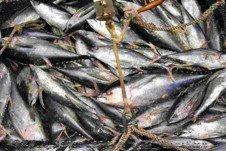
FISHING
Fishing is one of the two most important industries for the economy of Seychelles. In 2009, industrial fishing was the highest foreign exchange earner for the country. Tuna fishing is the highest earner. Licensing fees are also growing; that are paid by foreign companies that trawl in Seychelles’ territorial water. Seychelles is a Small Island Development State (SIDS) and does not have land resources. It is also vulnerable to climate changes. It depends on tourism and fishing, both of which need to be protected. Fisheries were 7.7 per cent of the Seychelles GDP in 2008 which brought in 97 per cent of the export earnings. The tuna fishery that is exploited by European Vessels mainly brought 261,000 tons in 2009. The fishing sector employs 17 per cent of the total employed population. It has a main role for food security, foreign exchange earnings and income generation.
MANUFACTURING SECTOR
The manufacturing sector of Seychelles is dominated by the tuna canning industry. The two major companies into this industry is IOT and IMPRESS. Both the companies manufacture tuna cans from imported metal and are into the production of fishmeal and catfood. The industry is particularly important for the economic growth and generates large amount of foreign exchange for the country.
Seychelles also has a small manufacturing and processing sector, oriented towards supplying the domestic market. The largest such company is the brewery, SEYBREW which is part of the Guinness group. This company until recently employed about 100 employees. Others include a tea factory that handles locally grown tea, process copra and vanilla pods and extract coconut oil. There is a plastics factory, a soft drink bottler, and a cinnamon distiller. Salt, cigarettes, boats, furniture, steel products, publications, animal feeds, processed meats, dairy products, paints, and assembled televisions are also produced. Oil exploration is underway, and geophysical and geochemical analyses indicate potential for commercial production.
MINING AND MINERAL INDUSTRY
Mining has played an insignificant role in the national economy, although some experts believe that the seabed around the Seychelles is rich in various natural resources. However, the current development technologies do not allow exploration or extraction of these natural resources that could yield commercial viable profits.
Seychelles’ mineral industry consists mostly of production of such materials as clay, coral, sand, and stone. Seychelles is not a globally significant mineral producer or consumer. In 2006, imports of mineral fuels accounted for about 27% of the value of total imports. That same year, Seychelles was estimated to produce about 210,000 metric tons per year (t/yr.) of gravel and crushed stone, 93,000 t/yr. of granite, and 8,100 t/yr. of sand. Polymetallic nodules were known to occur on the ocean bottom near the Admirante Islands. The Seychelles comprised 40 granitic and at least 50 coralline islands.
ENERGY AND POWER
The vast majority of Seychelles’ electricity demand is met by the state-owned oil- fuelled power station at Roche Caiman on Mahé’s east coast. Experienced managerial and technical staff, combined with regular spending on equipment updates, ensures a constant supply of power. In order to reduce the dependency on fossil fuel the Government has invested into wind farms providing 7% of the energy requirements. The fuel which powers the country’s generators is imported from the Gulf and skilful long-term planning by the state oil company SEPEC (Seychelles Petroleum Corporation) has led to the development of large bunkerage capacity in the country, allowing Seychelles to become the major distribution hub for the east African seaboard. The Seychelles Energy Commision is the regulator for the production of energy and have also been madated to set the tariff for selling extra units to the grid by independant power producers.
FINANCIAL INDUSTY
Today, the financial services sector is said to be the most rapidly evolving sector of Seychelles’ economy with a growing assortment of financial products and services, substantial advancements in the competence and capabilities of the country’s human resource and a common understanding that success, growth and productivity can all be achieved whilst complying with an efficient and up-to- date legal and regulatory framework. One of the key factors leading to the country’s ascent onto the global financial services scene has been its success in implementing a legal framework that is sound, reliable and attractive to investors. The Financial services sector is often referred to as the third pillar of the Seychelles’ economy and offers a range of services and products that make it such an exciting destination for Investment. The financial service industry has been classified into Banking and Insurance.
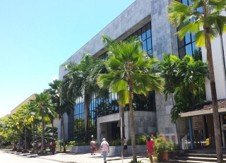
BANKING SECTOR
The Seychelles Monetary Authority, established in 1978 as the bank of issue, became the Central Bank of Seychelles in 1983. The national currency of Seychelles is the Seychellois rupee. Initially tied to a basket of international currencies it was depegged and allowed to be devalued and float freely in 2008 on the presumed hopes of attracting further foreign investment in the Seychelles economy. There are numerous commercial banks operating in the Seychelles including Barclays, Banque Francaise Commerciale (BFC), Bank of Baroda, Habib Bank, Mauritius Commercial Bank, Seychelles International Mercantile Banking Corporation (SIMBC) – Nuovobanq and the Seychelles Savings Bank of which Barclays and Nouvobanq have offshore banking licenses. Other companies include the Development Bank of Seychelles (DBS), which caters to small and medium- sized entrepreneurial projects, and the Seychelles Credit Union; Sterling Offshore Limited; and Appleby Global. In addition to these services, there were 14 licensed foreign exchange bureaus registered in the country in 2012. Seychelles is a signatory of the Cotonou Agreement which allows access to the facilities of the European Investment Bank (EIB). It’s a member of various banking and financial corporations, partnerships and banks including: the World Bank and International Finance Corporation (IFC), African Development Bank, the Development Bank of Southern Africa, the Industrial Development Corporation of South Africa Ltd and the New Partnership for Africa’s Development.
INSURANCE
There are around ten insurance and reinsurance companies in Seychelles include: Belairy Insuarance Ltd, D.A.A.R.T’s Ltd, Fidelity Insurance Broker Ltd, Fifco Services Ltd, H Savy Insurance Co. Ltd and Secura Insurance Brokers. Companies offer general insurance and life assurance; business insurance; real estate development and management; importation and sale of vehicle spare parts; and Cost Insurance and Freight (CIF), to insure goods.
TELECOMMUNICATION SECTOR
There are three telecom operators in Seychelles: Cable & Wireless, Airtel Seychelles and Intelvision. These companies also offer internet service and there are numerous internet cafes on the three main islands. Intelvision became Seychelles third telecom provider in 2006, the company already provided a cable TV service on the island and is now offering fixed telephony and internet access services. Cable & Wireless (Seychelles) Ltd, a branch of Cable and Wireless Olc, UK, is the national telecom operator in Seychelles. There are two GSM networks in operation, Cable and Wireless and Airtel. Payphones are available in most districts on the Inner Islands while the international roaming agreements are in force in Seychelles.
 TOURISM
TOURISM
The Seychelles tourism sector today is a success story. No doubt, the Seychelles has been endowed with wonderful natural tourism assets in its beautiful beaches and mountain backdrops, but its success has also been due to good governance and strategic policy choices. With 24.8 percent of gross domestic product (GDP) directly attributable to tourism, the Seychelles must ensure that its tourism sector will continue to be competitive in the long-run. In that context, it will need to make difficult but critical choices about where the sector should be headed and how it should work towards that vision. Visitors can enjoy coral beaches, water sports including scuba diving, waterskiing, and windsurfing, and boat or yacht tours of the islands. Tourism packages, including accommodations, are very popular. Hundreds of thousands of tourists visit every year, most of them from Europe. The Seychelles have one of the highest endemism rates of anywhere in the world, with some 30 endemic species of reptiles and amphibians and a dozen birds. The world’s largest population of Giant tortoises live on Aldabra Atoll, and 2 species of sea turtles nest on the islands. The archipelago’s wildlife is also a popular tourist attraction. Valid passports are required, but visas are not. If traveling from an infected area a certificate of vaccination is required.
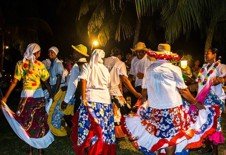
CULTURAL AND SOCIAL ACTIVITIES
The cosmopolitan Seychellois are a colorful blend of people of different races, cultures and religions. At different times in its history, people of African, European and Asian origin have come to Seychelles, bringing with them their distinct traditions and customs and contributing to the way of life and to the vibrant Seychelles culture. One can see these influences at work throughout the domains of local art, cuisine, music, dance and architecture. The architectural design of some of the grand old houses with their steep roofs are representative of a style adapted for comfortable living in the tropics that displays influences from Seychelles’ French and British colonial heritage. Modern architecture attempts to assimilate traditional styles with practical features designed to capture the island breezes.
Local artists continue to exhibit diverse styles that echo the multi-ethnic backdrop of the islands and bear testament to the various influences which have come to bear. Creole music and dance have their roots in African, Malagasy and European cultures with rhythms traditionally accompanied by simple drums and string instruments which, today, include such recent imports as the violin and guitar.
The traditional moutya is an erotic dance derived from the days of slavery and still features today, together with the sega with its colourful lyrics; the kanmtole, reminiscent of a country reel, and the Kontredanse, an import from the French court.
ETHNIC GROUPS
There are no distinct ethnic divisions, apart from small Indian and Chinese groups constituting about 1% of the total population. The bulk of the population is Seychellois, a mixture of African, French- European, and Asian strains.
LANGUAGE
Creole, a simplified form of French with borrowings from African languages, has been the first language since 1981 and is the initial language in public schools; it is spoken by about 91.8% of the population. English and French are also widely spoken as second languages. English is the first language of about 4.9% of the population. English, Creole, and French are all considered to be official languages; English is the official language of the National Assembly.
RELIGIONS
The great majority of the population practices Christianity. According to the most recent estimates, Roman Catholics constituted about 87% of the Christian community; Anglicans totalled another 7%. Other Christian churches include Baptists, Seventh-Day Adventists, the Assemblies of God, the Pentecostal Church, Nazarites, and Jehovah’s Witnesses. Hindus, Muslims, and Baha’is are also present.
The constitution provides for freedom of religion and there is no state religion; however, the government does offer sometimes substantial financial assistance to churches from the state budget, primarily in the form of grants, through an application process that is open to all.
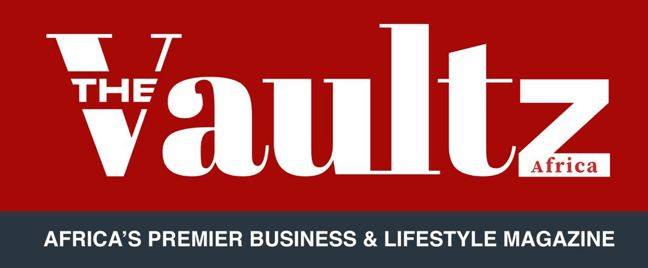

 ECONOMY
ECONOMY
 TOURISM
TOURISM